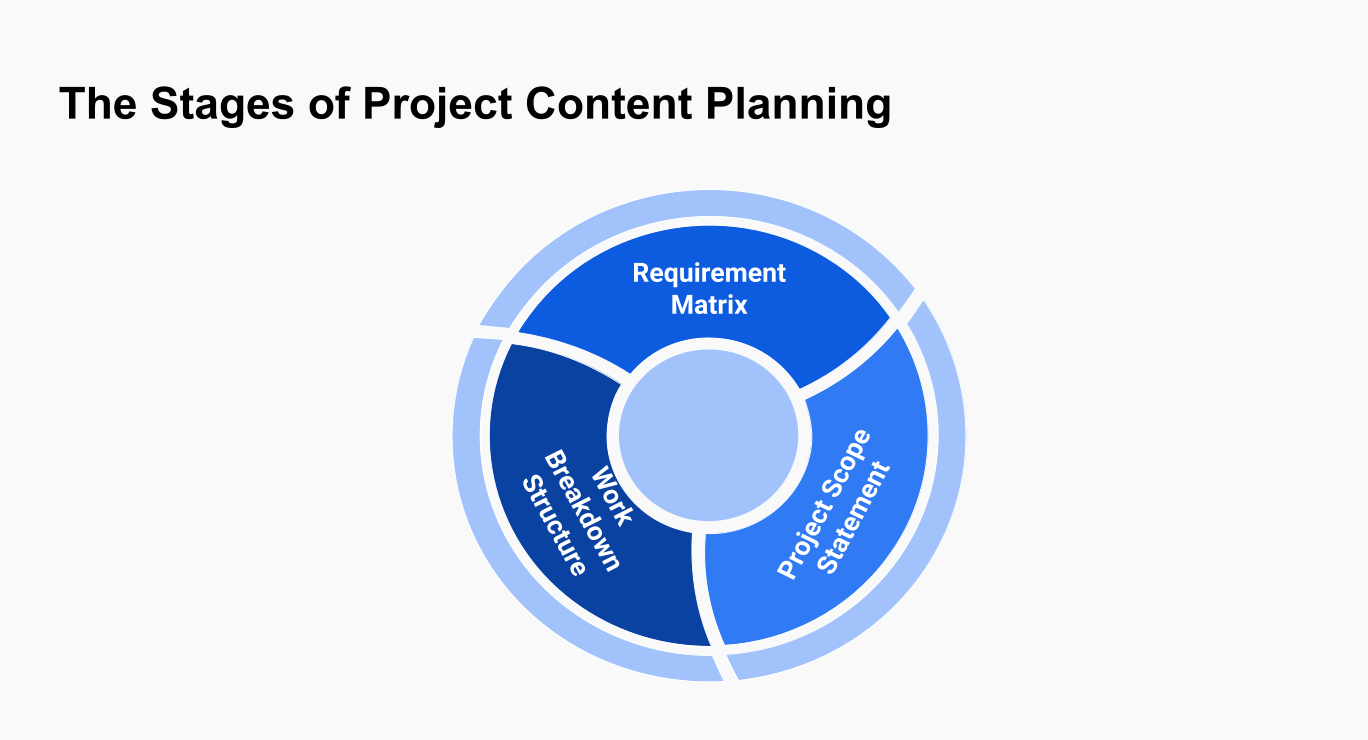Work Breakdown Structure Template: How to Break Down Your Project for Success
Understanding Project Scope: A Complete Guide
When you're managing a project, one of the most crucial things to get right is the project scope. Defining the scope properly ensures that your project is on track, stays within budget, and achieves its desired outcomes. In this article, we'll break down everything you need to know about project scope, from what it is to how to manage it effectively, and even provide a helpful project scope example.
What Is Project Scope?
In project management, project scope refers to all the work required to complete a project successfully. It encompasses the project's goals, deliverables, tasks, and deadlines, as well as the resources needed. The project scope defines what is included in the project and, just as importantly, what is not. This helps set clear boundaries and ensures everyone involved knows what to expect.
By clearly defining the scope, teams can avoid misunderstandings, budget overruns, and wasted time. It serves as a blueprint, guiding the project team toward successful completion.
What Is Project Scope Statement?
A project scope statement is a detailed document that outlines the project's objectives, deliverables, goals, and the approach to achieving them. It clearly defines the project's boundaries—what will and will not be included—and specifies the timeframe and resources. The scope statement is essential for aligning stakeholders and the project team, ensuring everyone is on the same page about what the project is meant to achieve.
Typically, the scope statement includes:
- Project objectives: the desired outcomes of the project
- Deliverables: the specific outputs the project is expected to produce
- Requirements: any special needs or conditions
- Milestones: key dates or checkpoints
- Assumptions: conditions believed to be true for the project’s success
- Exclusions: clearly defined boundaries of what’s outside the scope
What Is Scope Creep?
Scope creep refers to the uncontrolled or gradual expansion of a project's scope without adjustments to time, cost, or resources. It often happens when additional features, tasks, or deliverables are added to the project without proper review or approval. Scope creep can have a serious negative impact, causing delays, budget overruns, and confusion among the team.
Preventing scope creep requires a clear and well-documented project scope, regular communication with stakeholders, and strict change management procedures. Always ensure that any change to the project scope is evaluated and agreed upon before being implemented.
How to Write a Project Scope: 8 Steps to Define Project Scope
Writing a project scope can feel overwhelming, but by following these 8 steps, you can create a clear and actionable document:
- Define the Project’s Objectives: begin by understanding the purpose of the project. What are the key goals you want to achieve? Establish these objectives to guide the project.
- Identify Key Stakeholders: list the people involved in or impacted by the project. This includes team members, clients, vendors, and other parties with a vested interest in the outcome.
- Outline Deliverables: define the specific deliverables the project will produce. These should be measurable and achievable within the given timeframe.
- Determine Project Requirements: identify the resources, skills, and tools needed to achieve the deliverables. Make sure the team has the capabilities and materials to complete the tasks.
- Establish the Timeline: create a realistic timeline that includes key milestones and deadlines. Break the project down into manageable phases and ensure there’s enough time for each stage.
- Assess Assumptions and Constraints: recognize any assumptions you’re making about the project’s environment and resources. Similarly, identify any constraints that might limit the project’s scope.
- Specify Exclusions: clearly state what’s outside the scope. This helps prevent scope creep and keeps the project focused on its primary objectives.
- Document the Scope Statement: write the project scope statement using the information gathered in the previous steps. Ensure it’s detailed and clear to all stakeholders.

Project Scope Example
A well-structured template serves as a roadmap, guiding you through each component of the scope statement and making sure you cover all the bases. Here’s a breakdown of a simple project scope statement example that you can adapt to your projects:
- Project Title. Clearly state the name of the project. This should be concise yet descriptive enough to indicate the project’s purpose.
- Project Overview. Provide a brief summary of the project, including its goals and the problem it aims to solve.
- Project Objectives. List the specific objectives of the project. These should align with the overall business goals and be SMART (Specific, Measurable, Achievable, Relevant, Time-bound).
- Deliverables. Outline all the deliverables the project will produce. Be as detailed as possible, specifying the format, content, and any other relevant details.
- Scope Description. Provide a detailed description of the work that needs to be done to achieve the project objectives. Include the major tasks, work phases, and any key milestones.
- Acceptance Criteria. Define the conditions under which the project’s deliverables will be considered complete and acceptable. These criteria should be agreed upon by all stakeholders to ensure alignment.
- Exclusions. Clearly list what is not included in the project scope. This helps prevent scope creep by explicitly stating what is out of bounds.
- Constraints. Identify any limitations or restrictions that could impact the project, such as time constraints, budget limitations, or resource availability.
- Assumptions. Document any assumptions you’re making when planning the project. These could include things like availability of key resources, stakeholder commitment, or market conditions.
- Project Milestones. List the key milestones in the project’s timeline. These are significant points in the project that signify progress and help keep the team on track.
- Roles and Responsibilities. Define the roles of each team member involved in the project, along with their specific responsibilities. This ensures everyone knows who is accountable for what.
- Sign-Off Section. Include a section for stakeholder sign-off. This formalizes the agreement on the project scope and serves as a record that all parties are aligned.
Why is the Project Scope Statement Important?
The Project Scope Statement provides the clarity and structure necessary to keep your project on track. Here’s why it’s crucial:
- Prevents Scope Creep: By clearly defining what’s in and out of scope, you protect your project from unnecessary changes that could stretch your resources thin.
- Sets Clear Expectations: It ensures that everyone involved—team members, stakeholders, and clients—understands what the project will deliver, reducing misunderstandings.
- Guides Decision-Making: When faced with choices during the project, the scope statement serves as a reference point to determine whether new requests align with the project’s goals.
The Benefits of Defining Your Project Scope Early
Setting the project scope early on has multiple advantages:
- Better Planning: you can plan the resources, budget, and timeline needed to complete the project successfully.
- Improved Communication: with a clear scope, communication with stakeholders is more effective, reducing the chance of misunderstandings.
- Scope Control: early definition helps you control the project’s direction and avoid scope creep, ensuring that no unnecessary additions are made.
Managing Project Scope in Agile Environments
In Agile environments, managing project scope is a bit different. Agile methodologies focus on flexibility, continuous improvement, and delivering value in smaller, iterative cycles (sprints). The project scope is defined for each sprint, but the overall scope may evolve as the team receives feedback.
While scope is fluid in Agile, it’s still essential to have a high-level understanding of what needs to be achieved. Teams use tools like backlog management and user stories to ensure the scope of each sprint aligns with the project’s goals.
The Role of Project Management Software in Scope Management
Project management software plays a vital role in managing scope. Tools like Planyway help you track tasks, timelines, and resources, making it easier to stay within the defined project scope. These platforms also allow for collaboration, so all stakeholders can be updated on progress and changes.

By using project management software, you can:
- Track deliverables and milestones
- Identify potential scope creep early
- Streamline communication
- Ensure all project elements are within the agreed scope
How Is a Project Scope Statement Different from Other Project Management Documents?
The project scope statement is a foundational document, but it differs from other project management documents:
- Project Charter: the project charter is a high-level document that outlines the project's purpose and stakeholders. It’s broader than the scope statement and doesn’t go into as much detail.
- Work Breakdown Structure (WBS): the WBS breaks down the project into smaller, manageable parts. While the scope statement defines what’s included in the project, the WBS details how the work will be done.
Project Scope vs. Product Scope
The project scope focuses on the work required to complete the project successfully. It includes tasks, deadlines, and deliverables. On the other hand, product scope refers to the features and functions of the product being created. While the product scope defines what the product will do, the project scope defines how the project will be carried out to deliver that product.
Final Thoughts
The Project Scope Statement is more than just a document—it’s the foundation of your project’s success. By clearly defining the scope, you set the stage for effective communication, efficient resource management, and, ultimately, the successful delivery of your project. Whether you’re managing a small task force or leading a major initiative, a well-crafted project scope management is your best defense against the chaos of an uncontrolled project.
About the Author
Sergey Koshevoy is the CEO of Planyway and a seasoned product manager, bringing a wealth of experience in project management and team collaboration tools. A fan of productivity techniques, Sergey is passionate about creating intuitive and efficient solutions that help teams work smarter and achieve their goals.



